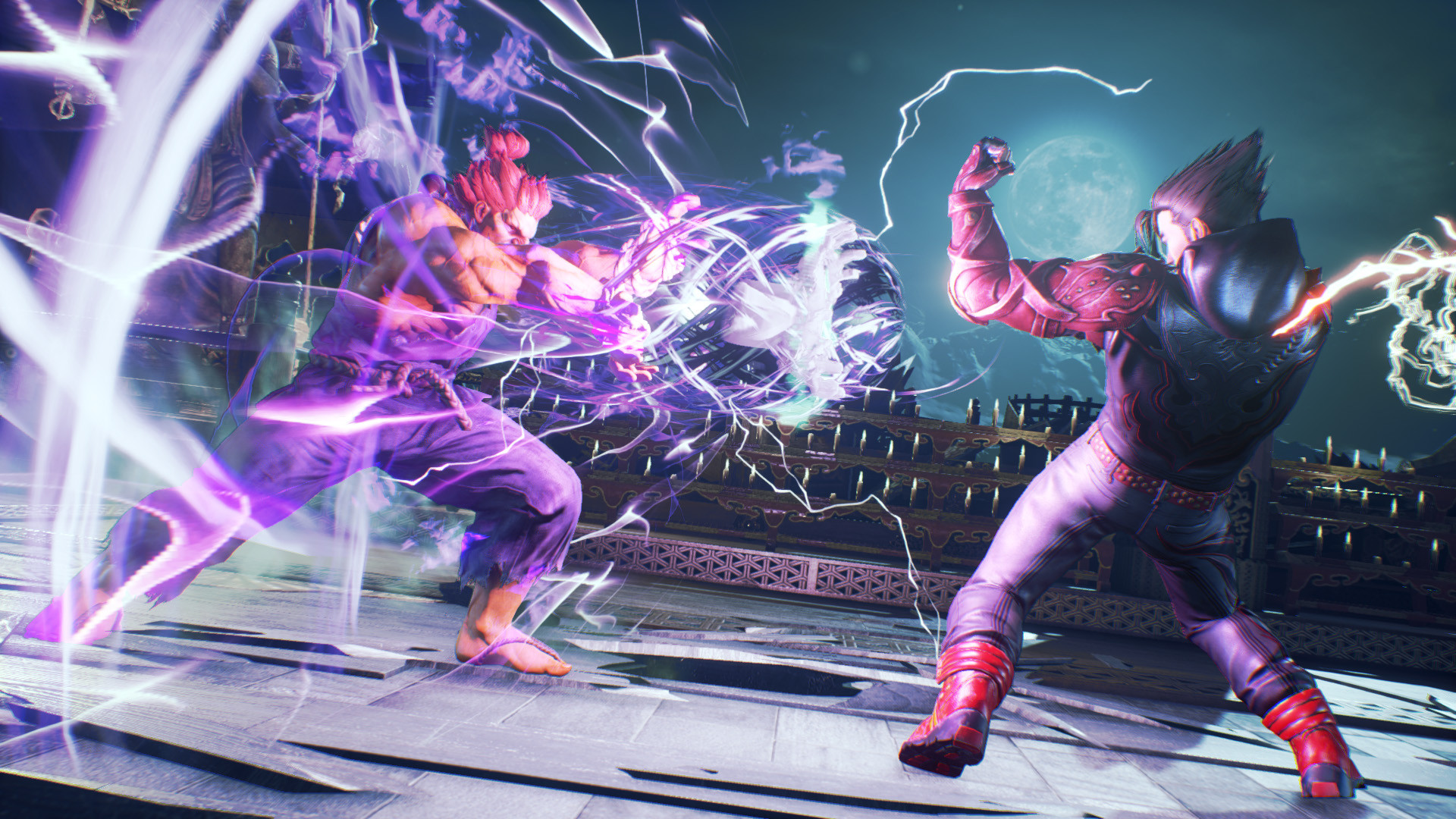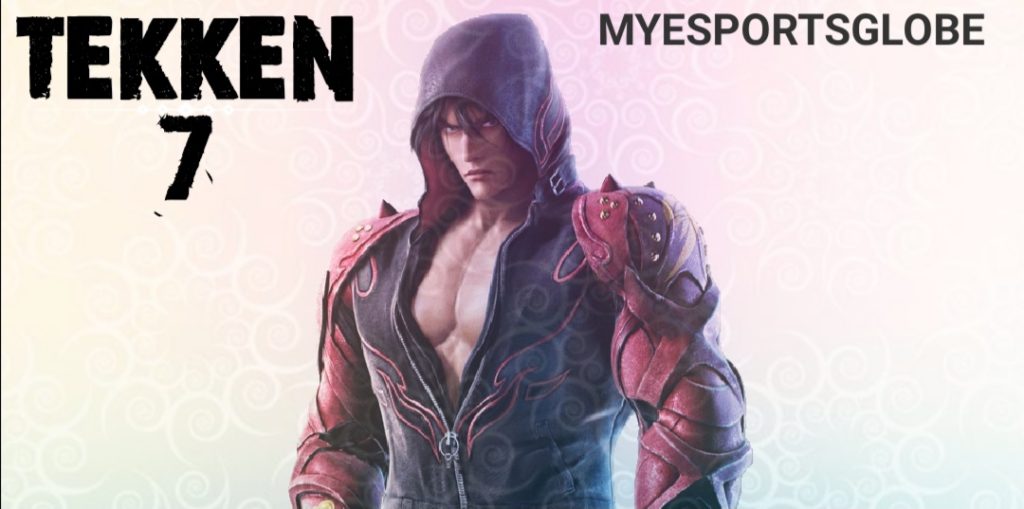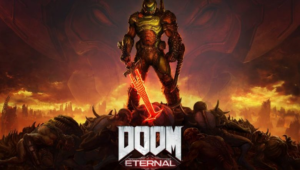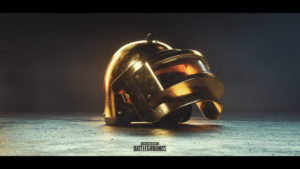Tekken 7 is a fighting game developed and published by Bandai Namco Entertainment. It is the ninth overall installment in the Tekken series. Tekken 7 had a limited arcade release in March 2015. An updated arcade version, Tekken 7: Fated Retribution, was released in July 2016, and features expanded content including new stages, costumes, items and characters. The home versions released for PlayStation 4, Xbox One and Microsoft Windows in June 2017 were based on Fated Retribution.
Set shortly after the events of Tekken 6, the plot focuses on the events leading up to the final battle between martial artist Heihachi Mishima and his son, Kazuya. Tekken 7 introduces several new elements to the fighting system such as Rage Arts and the Power Crush mechanic, making the game more beginner friendly than previous iterations in the series. Tekken 7 was a critical and commercial success, selling over five million copies by December 2019.

Development Of Tekken 7 –
In January 2014, Tekken series director and producer Katsuhiro Harada expressed interest in continuing the series on PlayStation 4, and later said that PlayStation was the primary platform of development for the new installment. Tekken 7 was announced by Harada on July 13, 2014 during EVO 2014 The announcement was not initially planned, but was done as a last minute response to a leak of the game’s announcement trailer that morning. The game was developed using the Unreal Engine 4, which allows for it to be developed for multiple platforms. While Tekken games historically have been PlayStation-based in arcades, Harada stated that Tekken 7 runs on an arcade board based on PC architecture.

Location tests of the game were held in Tokyo and Osaka from October 3 to 5, 2014. Trailers released in late 2014 showed the game running in 1080p and 60 frames per second On January 27, 2015, a live-televised tournament based on the same game build was held in the Nexon Arena in Seoul, South Korea known as “Tekken 7 Crash”. During the Japan Amusement Expo (JAEPO) 2015, a newer build of the game was showcased, offering Lucky Chloe and Shaheen as part of the character roster for the first time as well as the traditional stage-based gameplay progression.
New Game Features –
Tekken 7 focuses on 1v1 battles. New features to the gameplay include:
Rage Art –
A critical move unique to each character and only accessible while in Rage mode, causing it to deactivate until the next round. If the initial attack hits the opponent, it will trigger a cinematic sequence and deal roughly 30% damage, depending on the character.
Power Crush-
Performs an attack that can absorb an opponent’s hits with the Mid or High property and continue attacking.
Screw hits-
This largely replaces the Ground Bound (formerly simply as Bound) mechanic, which added significant opportunity to perform long, high-damage combos, by knocking an opponent hit with a launcher back to the ground into a vulnerable state. Screw hits have similar applications as Ground Bounding moves, but the receiving opponent’s animation is altered, putting them into an aerial tailspin (i.e. a “screw”) as they fall to the ground. Unlike the Ground Bound, Screw hits cannot be used to do wall combos.
With a new display system, the game’s multiplayer allows players to choose which side of the screen to play on. Movement has undergone some changes and is similar to the movement mechanics found in Tekken revolution, most notably when characters walk backwards. The arcade version features the traditional stage-based playthrough, in which the player progresses by beating five different opponents one by one, ending with a fixed penultimate and final stage. Matches may be interrupted if another player joins the game.

Online mode is available for both local and international play. Character customization is featured, allowing the player to modify characters’ appearances. For the first time in the arcade series, the game features a practice mode, which allows players to train moves against an opponent for a limited amount of time, as well as an option to collect in-game rewards, mainly customization items, through “Treasure Box” by winning enough matches.
The Fated Retribution update for arcades adds further gameplay changes.
Rage Drive –

Most characters have one or more Rage Drive moves, which are either brand new moves or powered-up variations of existing moves. Like the Rage Art, it requires sacrificing their Rage mode for the round, trading the severe damage of the Rage Art for a move with less risk and different utility.
Rage Art –

also adjusted so that the amount of damage dealt to the enemy is inversely proportional to the player’s current health bar.
Among several new and returning characters, the update introduced Akuma, the first of several additional characters utilizing their own unique mechanics which follow the gameplay conventions of the 2D fighting games he originates from, including –
Cancelling successful or blocked attacks with special moves.
Different jump physics and air attacks which can be used are more offensive than the Tekken series’ standard jump attacks.
A Super Combo meter which builds up as the fight progresses, and is spent in order to use “EX” versions of special moves and Super Combo moves.
Lacking some of Tekken 7’s own gameplay mechanics like the Rage Drive and 10-hit combo moves.
Downloadable Content –
Two other characters added as downloadable content (DLC) after the release of the home versions of the game would include very similar fighting mechanics, those characters being Alisa and Gesse. Another guest character, Nocits has more standard Tekken gameplay but can perform jump-in attacks like the “2D” characters.
Updates to the arcade and home versions also added moves applying a Wall Bound hit state for all characters. Initially, only Geese Howard was able to perform moves inflicting the wall bound state, until the Season 2 update added the mechanic for every character.
Rank System in Tekken 7 –
The Tekken series’ ranking system has been a grey area for newcomers since Ghost Battle mode, where you play continuous ranked matches offline against the AI, was introduced in Tekken 5. Unless you’ve been playing for a while, no one will understand what you mean when you say you just got promoted to the Warrior rank. Tekken series has a ranking system different from other games like PUBG, COD, STREET FIGHTER V, in these games rank are increased on a point basis. Rank in these games are Bronze, silver, gold, platinum, diamond like this. But in Tekken 7 ranks are totally different. Let’s take a look at the ranking system of Tekken 7.
Beginner
- Kyu ranks (9th kyu to 1st kyu)
- Dan/Silver ranks (1st dan to 3rd dan)
- Light blue ranks (Initiate, Mentor, Expert, Grand Master)
- Green ranks (Brawler, Marauder, Fighter, Vanguard)
- Yellow ranks (Warrior, Vindicator, Juggernaut, Usurper)
- Orange ranks (Vanquisher, Destroyer, Savior, Overlord)
- Red ranks (Genbu, Byakko, Seiryu, Suzaku)
- Ruler ranks (Mighty Ruler, Revered Ruler, Divine Ruler, Eternal Ruler)
- Blue ranks (Fujin, Raijin, Yaksa, Ryujin)
- Purple ranks (Emperor, Tekken King)
- Gold ranks (Tekken God, True Tekken God)
- Tekken God Prime
Points system –
Bandai Namco Entertainment have never released an official guide on the points system for the ranks in Tekken 7 and as such, with no way to track progression, players sort of had to fumble their way up the ladder and try to predict when they would get a promotion or demotion match. However, for Season 2, the Tekken Project Team introduced a progression bar that pops up at the end of a match showing you how many points you gained and how much closer you are to getting promoted or demoted.
Before the Initiate rank, players only need to gain a few points to win promotions, perhaps to encourage newcomers to continue playing the game. The numbers seem to vary very slightly at different levels but from the Initiate rank onwards, this is how the points system works:
(Rank difference – Points gained for a win – Points lost for a loss)
Same rank – 1,900 points – 1,700 points
+/- 1 rank – 1,250 points – 1,150 points
+/- 2 ranks – 800 points – 600 points
+/- 3 ranks – 550 points – 350 points
+/- More than 3 ranks – 50 points – 50 points
Best character of Tekken series –
Tekken series has a really big list of characters available. But the most liked by Tekken fans is Jin Kazama. It’s not possible to talk about the Tekken series without mentioning Jin. Let’s know about this super fascinating character.
Jin Kazama –

Jin is one of the main characters of the Tekken series. He is featured on the packaging for the console version of almost every sequel following his introduction in Tekken 3. Video game publications have praised Jin’s character, which has topped various lists. In Gamest’s 1997 Heroes Collection, Jin was voted as 31st staff favorite.
He has also been the main protagonist for the majority of the following entries ever since his debut in Tekken 3 as he has been trying to end the Mishima Bloodline and save the world from a certain evil, with the exceptions of his role as an anti-villain in Tekken 6 (with Lars Alexandersson taking his role as the protagonist) and a supporting character in Tekken 7 (with Heihachi Mishima and Kazuya Mishima taking the role as the main characters of the game).
Jin is the son of Kazuya Mishima and Jun Kazama, the grandson of Heihachi Mishima and Kazumi Mishima, the adoptive nephew of Lee Chaolan, the half-nephew of Lars Alexandersson, a relative to Asuka Kazama, and the great-grandson of Jinpachi Mishima.
As a result of being introduced as the protagonist in Tekken 3, Jin’s movements were made to be balanced so that he would have neither strong nor weak movesets. This caused difficulties in his design. He was meant to appeal to veterans of the franchise as he uses both moves from Heihachi and Kazuya but not with the same amount of power. As Jin has no model for his fighting style, several of his karate moves were created by the Tekken staff.
Jin in Tekken 7 –
Jin is one of the four characters added in an update after the full arcade release on March 31, 2015. Prior to becoming playable in the timed release, he was originally a non-playable sub-boss, replacing Heihachi under some conditions. However, in Fated Retribution and console ports, Jin is no longer a sub-boss.
Tekken 7 received “generally favorable” reviews, according to review aggregator Metacritic. According to Chris Carter of “Destructoid, “Impressive effort with a few noticeable problems holding it back. Won’t astound everyone, but is worth your time and cash,” and awarded it a score of 8/10. Electronic Gaming Monthly’s Evan Slead scored the game a 7.5/10 with the consensus “Tekken 7, the latest entry in the long-running franchise, delivers what fighting genre fans love about multiplayer battles, but there isn’t enough new material to make it truly stand out from the increasingly competitive options in the fighting genre.”] The game was rated 36 out of 40 for both the PlayStation 4 and Xbox One versions by Famitsu.
Platforms Tekken 7 Available On –
Tekken 7 is currently available on 3 platforms to play –
PlayStation.
Xbox.
Microsoft windows.
If you liked the article, read more on MyEsportsGlobe.
Follow MyEsportsGlobe on social handles to get regular updates –







